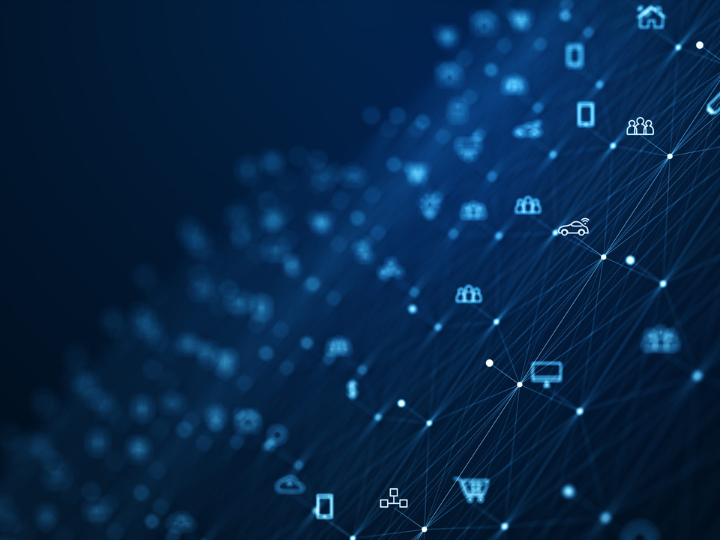by Natalie Marchant*
From soil moisture sensors being used to optimize farmer’s yields, to thermostats and thermometers, the Internet of Things (IoT) is transforming the way we live and work.
Billions of networked ’smart’ physical objects around the world, on city streets, in homes and hospitals, are constantly collecting and sharing data across the internet, giving them a level of digital intelligence and autonomy.
Around a quarter of businesses were using IoT technologies in 2019, according to McKinsey, up from 13% in 2014.
And already, there are more connected devices than people in the world, according to the World Economic Forum’s State of the Connected World report, and it is predicted that by 2025, 41.6 billion devices will be capturing data on how we live, work, move through our cities and operate and maintain the machines on which we depend.
The digital transformation that is taking place due to emerging technologies, including robotics, the IoT and artificial intelligence, is known as the Fourth Industrial Revolution - and COVID-19 has accelerated the use of these technologies.
A brief history of the IoT
The concept of adding sensors and intelligence to physical objects was first discussed in the 1980s, when some university students decided to modify a Coca-Cola vending machine to track its contents remotely. But the technology was bulky and progress was limited.
The term ‘Internet of Things’ was coined in 1999 by the computer scientist Kevin Ashton. While working at Procter & Gamble, Ashton proposed putting radio-frequency identification (RFID) chips on products to track them through a supply chain.
He reportedly worked the then-buzzword ‘internet’ into his proposal to get the executives’ attention. And the phrase stuck.
Over the next decade, public interest in IoT technology began to take off, as more and more connected devices came to market.
In 2000, LG announced the first smart refrigerator, in 2007 the first iPhone was launched and by 2008, the number of connected devices exceeded the number of people on the planet.
In 2009, Google started testing driverless cars and in 2011, Google’s Nest smart thermostat hit the market, which allowed remote control of central heating.
Everyday uses
Connected devices fall into three domains: consumer IoT, such as wearables, enterprise IoT, which includes smart factories and precision agriculture, and public spaces IoT, such as waste management.
Businesses use IoT to optimize their supply chains, manage inventory and improve customer experience, while smart consumer devices such as the Amazon Echo speaker, are now ubiquitous in homes due to the prevalence of low-cost and low-power sensors.
Cities have been deploying IoT technology for more than a decade - to streamline everything from water meter readings to traffic flow.
"In New York City, for example, every single building (so more than 817,000) was retrofitted with a wireless water meter, starting back in 2008, which replaced the manual system where you had to walk up to a meter read the numbers and generate bills that way," says Jeff Merritt, the World Economic Forum’s head of IoT and Urban Transformation.
"Most cities now leverage license plate readers, traffic counters, red light cameras, radiation sensors and surveillance cameras to manage day-to-day operations."
In medicine, the IoT can help improve healthcare through real-time remote patient monitoring, robotic surgery and devices such as smart inhalers.
In the past 12 months, the role of the IoT in the COVID-19 pandemic has been invaluable.
"IoT applications such as connected thermal cameras, contact tracing devices and health-monitoring wearables are providing critical data needed to help fight the disease, while temperature sensors and parcel tracking will help ensure that sensitive COVID-19 vaccines are distributed safely," according to the Forum’s State of the Connected World report.
Beyond healthcare, IoT has helped make COVID disrupted supply chains more resilient, automated activities in warehouses and on factory floors to help promote social distancing and provided safe remote access to industrial machines.
The future of IoT
The range of potential IoT applications is "limited only by the human imagination" - and many of these applications can benefit the planet, as well as its people.
A 2018 analysis of more than 640 IoT deployments, led by the World Economic Forum in collaboration with research firm IoT Analytics, showed that 84% of existing IoT deployments address, or have the power to advance, the UN’s Sustainable Development Goals.
These include promoting more efficient use of natural resources, building better, fairer “smart cities”, and developing clean, affordable energy alternatives.
IoT smart roads that connect with self-driving cars could improve driver safety and optimize traffic flow, potentially reducing the average commute time by 30 minutes. Emergency responder times could also be cut significantly.
Real-time crime mapping and predictive policing tools could also help prevent crime. McKinsey estimates that using data to deploy scarce resources more effectively could save 300 lives a year in a city with the population and profile of Rio de Janeiro.
Weighing the risks
But for all the benefits, IoT technologies can also be misused and risks include security and privacy issues, cybercrime, surveillance at work, home or in public spaces and control of mobility and expression.
The Forum’s State of the Connected World report identifies a ’governance gap’ that needs to be closed between the potential risks and society’s efforts to safeguard against them through laws, industry standards and self-governance approaches.
"Effective technology governance mitigates risks and reduces the potential harms to society while also helping to maximize the technology’s positive impacts."
*Writer, Formative Content
**first published in: www.weforum.org




 By: N. Peter Kramer
By: N. Peter Kramer
